Brock's Monument
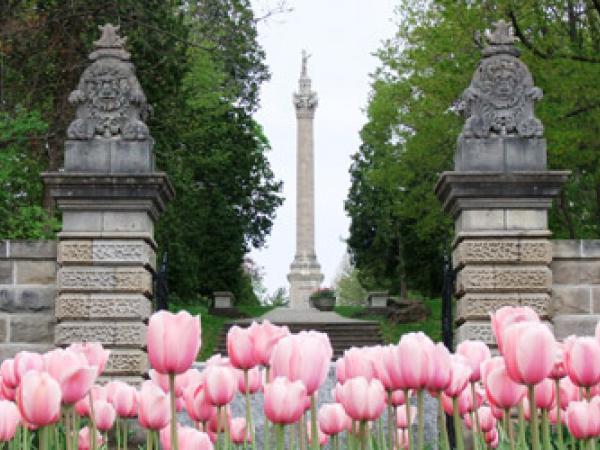
Brock's Monument
Monument that markes the War of 1812's Battle of Queenston Heights. Located in Queenston Heights Park, Niagara on the Lake, it offers spectacular views of Lake Ontario to the North, and Niagara Falls to the South.
In his second of six books in the series Upper Canada Preserved — War of 1812, author Richard Feltoe continues a battlefield chronicle that combines the best of modern historical research with extensive quotes from original official documents and personal letters, bringing to life the crucial first six months of the 1813 American campaign to invade and conquer Upper Canada. The Pendulum of War documents the course of more than seven major battles and over a dozen minor engagements that were fought on the St. Lawrence, Niagara, and Detroit frontiers to control Upper Canada during this period. It also reveals some of the behind-the-scenes personal stories and conflicts of the personalities involved.
Throughout the work, historical images are counterpointed with modern pictures taken from the same perspective to give a true then-and-now effect. Strategic maps trace the course of the campaign, while never-before-published battlefield maps reveal the shifting formations of troops across a geographically accurate terrain.
 Buy from Amazon
Buy from Amazon  Buy from Indigo
Buy from Indigo 
Monument that markes the War of 1812's Battle of Queenston Heights. Located in Queenston Heights Park, Niagara on the Lake, it offers spectacular views of Lake Ontario to the North, and Niagara Falls to the South.

The property was first owned by Mowhawk Chieftan, Joseph Brant, and then acquired by Captain John Powell - who became the first person to build on it. It is historically known as the site where the famous Sir Isaac Brock wooed his secret love Lady Sophia Shaw, and where they last met on the eve of the War of 1812.
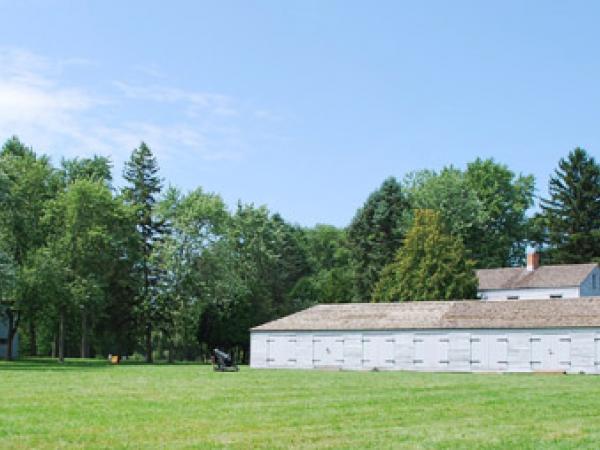
Following the destruction of Fort George by cannon fire in 1813, the British decided to move their key fortification inland. They began construction of storehouses and military bunkhouses on the south-western edge of the military lands (or "Commons) - well out of reach of American guns. By 1854 this area became known as Butler's Barracks - named after John Butler and his "Butler's Rangers". You can visit the site today and find the old buildings still standing.
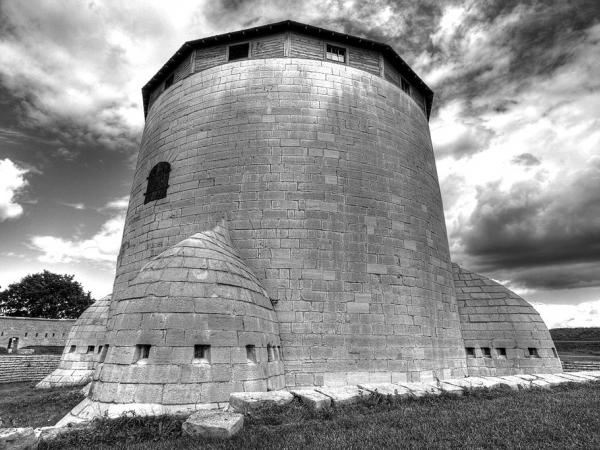
Fort Frederick is a historic military building located on Point Frederick on the grounds of the Royal Military College of Canada (RMC) in Kingston, Ontario. Its construction dates to 1846 and the Oregon Boundary Dispute. The fort consists of earthworks surrounding a Martello tower. Fort Frederick is included in two separate
Fort George is a rebuilt historic military structure located in Niagara on the Lake. Famous for its War of 1812 battle, the fort was once taken by the American army, before they were repelled at the battles of Stoney Creek and Beaver Dams. It is now maintained by Parks Canada, and visitors are treated to a glimpse of life in the early 19th century.

Located along the shores of Lake Ontario, at the mouth of the Niagara River, Fort Missisauga was built from 1814-1816 to replace Fort George. It consists of a box-shaped brick towar and earthworks shaped as a star. It was home to the first lighthouse on the Great Lakes, now commemorated by a plaque at the center of the fort.

Fort York is an historic military fortification designated as a National Historic Site of Canada in 1923. The original garrisons were built in 1797, but destroyed by the retreating British in the Battle of York, 1813. Today's fort was built by engineers immediately after the War of 1812, and was sufficient enough to repel another attack in 1814. The British Army occupied Fort York from 1793 to the 1850s and transferred it to Canada, which used it until 1932.
Set along the Niagara Parkway, Freedom Park commemorates the main terminus where fugitive slaves began their journey out of Buffalo into Upper Canada along The Underground Railroad.
_0-itok-fkOLsPg1.jpg)
The historic city of Kingston is located where the St. Lawrence river flows into Lake Ontario. Settled by 17th C. explorers to establish a trading hub with Natives, it played a key role in the War of 1812 as a base for the British Naval fleet. Today many of its historic buildings still stand, as well as the beautiful Rideau Canal, which connects Kingston with Ottawa.
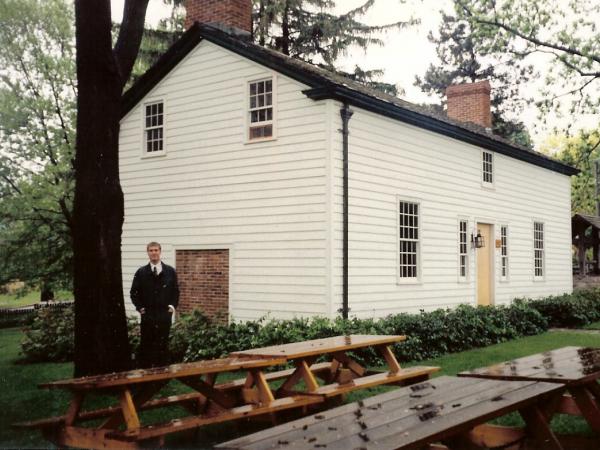
The residence of the War of 1812's famous heroine, and the starting point of her journey to warn the British of an impending invasion, the homestead of Laura Secord is now a museum and heritage center. Here you will find plenty of historical information as well as guided tours.
A monument to the Georgian era, McFarland House is one of the few buildings to survive the burning of Newark - which took place when the Americans occupying Fort George began their retreat in 1813. It is the oldest building owned by The Niagara Parks Commission and has a conservatory tea room open to the public throughout the week.
One of Southern Ontario's most historic towns, Niagara on the Lake is home to key War of 1812 sites such as Fort George, Butler's Barracks, and Queenston Heights. In town you will also find an old apothecary, beautiful Victorian homes, and the famous Prince of Wales hotel.
-itok-EHAvily0.jpg)
The site of one of Canada's most historic battles in the War of 1812.
Built in 1864, The Prince of Wales Hotel in Niagara-on-the-lake is an historic Victorian structure that once hosted Queen Elizabeth II (1973), and The Duke and Duchess of York (1901). Located in the heart of the town, it is close to many other famous sites such as Fort George, The Niagara Apothecary, and the famous Shaw Festival Theater.

Known for its vistas of the Niagara River, Lake Ontario, and vineyards, Queenston Heights is the birthplace of Niagara Falls and a terminus for The Bruce Trail. At this site you will find information on the famouse Battle of Queenston Heights, along with monuments to Brock and Laura Secord.
Tours that might be of interest.
The War of 1812. Anyone from Canada or the USA should at least have heard of it. But if you live in the Niagara region (on either side of the border), 1812's significance takes on a particular quality. Our Open Book Explorer tour will take you to some of the more famous sites, and pair you up with great reading along the way.
Welcome to The Niagara Parkway. Winding its way along our side of the Niagara River, the parkway connects Fort Erie to Niagara-on-the-Lake, passing through several villages and historic areas - including Niagara Falls, where out tour begins. Have we mentioned its perfect for biking? Have we mentioned the enormous amount of history you can discover? How about all the books to go along?
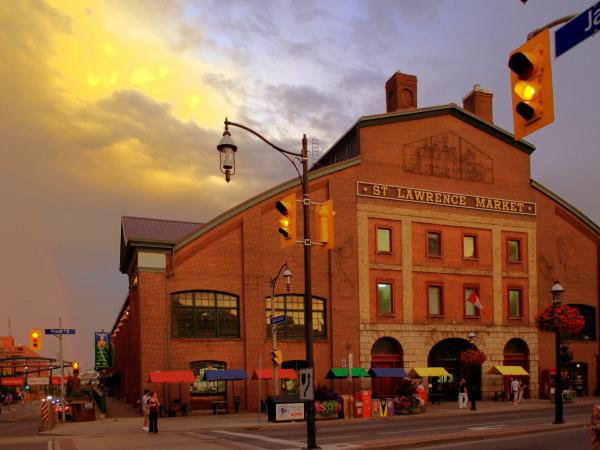
John Goddard's Inside the Museums is the perfect book to accompany this tour of all the designated heritage sites of Toronto. Toronto, as one would guess, is a culturally alive city that has not only lived through but helped foster some of the watershed moments in Ontario history.
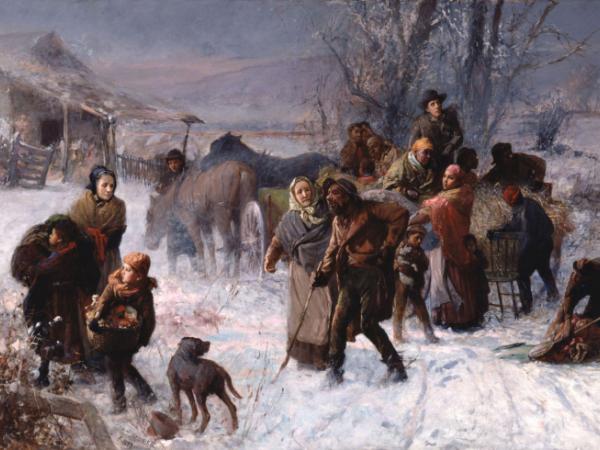
To many living in the southern United States during the 1700's, Canada was the "cold and distant North". But for African slaves looking to escape horrifying oppression, Canada became the "North Star," a place where they could live as free persons. From 1840 to 1860, the Underground Railroad - a network of safe houses and secret routes - was utilized by fugitive slaves and abolitionists to find such freedom.

Visiting a Village is an ideal introduction to understanding the concept of community. Children will learn how the settlers worked together with a spirit of cooperation by trading their goods and services with each other. Knowing about what they might see on their first visit to an historic site will help spark a child’s curiosity.

Learn the history behind this national holiday, celebrating the birth of a nation by Canadians from coast to coast. See the many different ways in which this multi-cultural nation recognizes this occasion with fireworks, music, food, a day-off work, and other special events.
Visit the publisher's website.
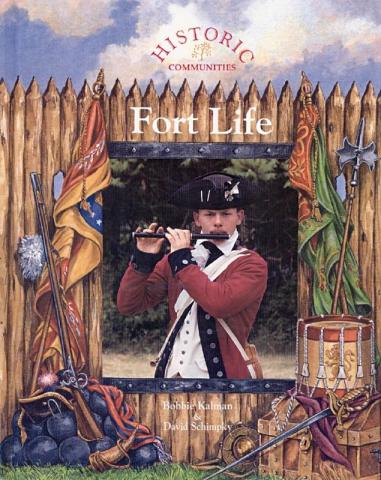
Coveted for their strategic military locations, forts often changed hands many times. Forts played a vital role in the settlement of the New World and were a means of refuge for soldiers and settlers. The difficult life of the soldier is detailed from the harsh living conditions to the primitive medical care they received.
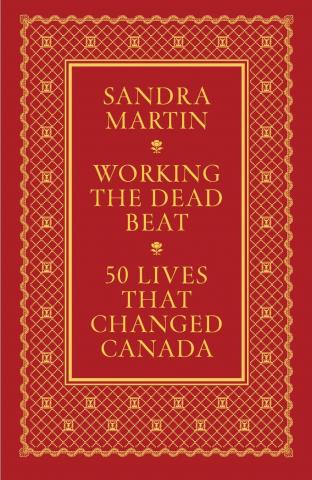
Globe and Mail columnist Sandra Martin honours the lives of Canada's famous, infamous, and unsung heroes in this unique collection of obituaries of the first decade of the twenty-first century. Here are Canadian icons such as Prime Minister Pierre Trudeau, economist John Kenneth Galbraith, social activist June Callwood, and urban theorist Jane Jacobs. Here are builders such as feminist and editor Doris Anderson, and businessman and famed art collector Ken Thomson.
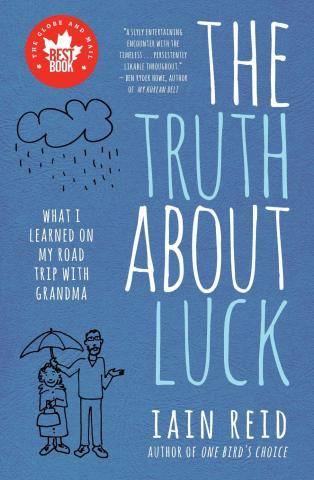
In The Truth about Luck, Iain Reid, author of the highly popular coming-of-age memoir One Bird's Choice, accompanies his grandmother on a five-day vacation -- which turns out to be a "staycation" at his basement apartment in Kingston. While the twenty-eight-year-old writer is at the beginning of his adult life, his ninety-two-year-old grandmother is nearing the end of hers.

In 1987, Merilyn Simonds happened upon a cache of letters, albums, and clippings in the attic of her house in Kingston, Ontario. Among the overflowing boxes and stuffed sugar sacks was a collection of letters from the months immediately after the First World War.
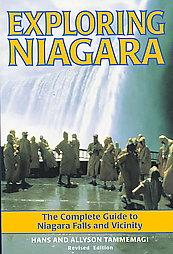
Covering both sides of the Canada-U.S. border, and all within about a 30-minute drive of the Falls, the book unveils more than 50 tours and day trips to and through places of interest in the Niagara region. Descriptions of the trips themselves - varying from under an hour to several days - detail the historical and geographical highlights of each destination, and offer up a variety, suggesting tours that can be taken by car, by bicycle, or on foot.
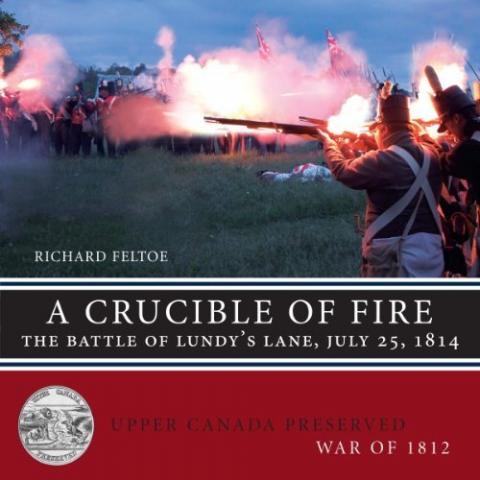
Following their invasion at Fort Erie and decisive victory at the Battle of Chippawa, an American army of over 5,000 men seemed poised to sweep across the Niagara frontier to Lake Ontario, link up with the American fleet, and complete the final expulsion of the British allied forces from Upper Canada. However, only a month later, the shattered remnants of this force were firmly on the defensive and feverishly digging in as the British advanced to begin the siege of Fort Erie.
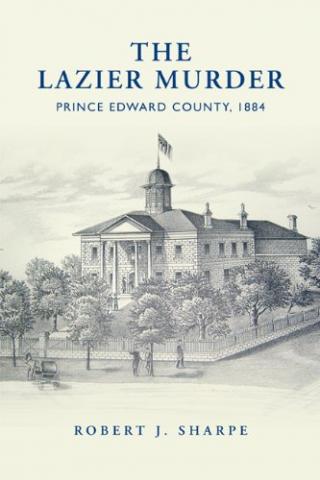
In December 1883, Peter Lazier was shot in the heart during a bungled robbery at a Prince Edward County farmhouse. Three local men, pleading innocence from start to finish, were arrested and charged with his murder. Two of them — Joseph Thomset and David Lowder — were sentenced to death by a jury of local citizens the following May. Nevertheless, appalled community members believed at least one of them to be innocent — even pleading with prime minister John A. Macdonald to spare them from the gallows.
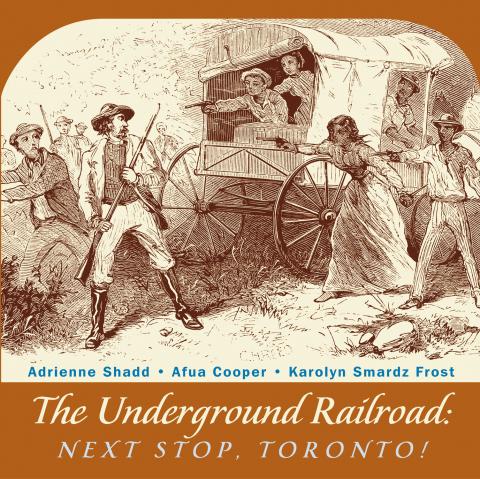
The Underground Railroad: Next Stop, Toronto!, a richly illustrated book, examines the urban connection of the clandestine system of secret routes, safe houses and "conductors." Not only does it trace the story of the Underground Railroad itself and how people courageously made the trip north to Canada and freedom, but it also explores what happened to them after they arrived.
-itok-ulnDhsng.jpg)
Ronald J. Dale's richly-illustrated book provides insight into aspects of Niagara-on-the-Lake’s history often unknown to visitors. From its establishment as the first capitol of Ontario, to the founding of the province’s first newspaper, to the auspicious and renouned Shaw Festival - the book contains helpful information along with excellent suggestions of landmarks for you to discover. A perfect companion for your visit to one of Southern Ontario's most picturesque towns.
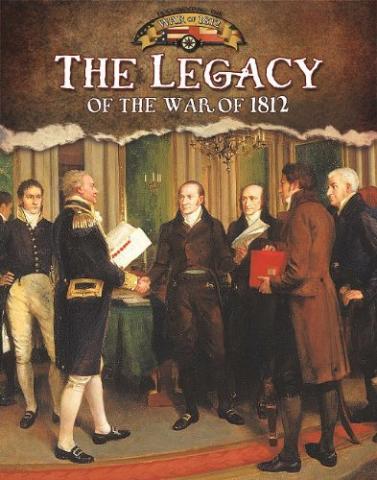
The War of 1812 is an important part of Canadian history. Fought during a period of nation-building in North America, this war helped to cement Caada's sense of national pride having successfully repelled an invasion.
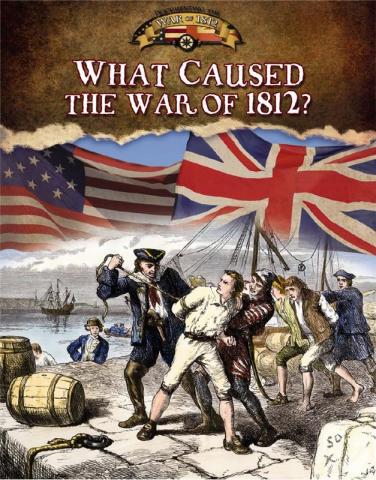
In 1812, the Napoleonic Wars in far-off Europe began a chain of actions that would lead the United States into war against Britain and its colonies in Canada in the New World. This fascinating book reveals how U.S. president James Madison declared war on Britain for harming U.S. trade with Europe by naval blockade, for impressing U.S.
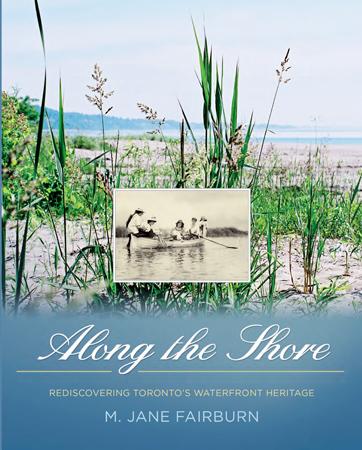
Along the Shore examines the Toronto waterfront, past and present, through the lens of four lakefront communities and districts — the Scarborough shore (including the Bluffs), the Beach, the Island, and the Lakeshore (New Toronto, Mimico, Humber Bay, and Long Branch). Each retains a direct and immediate connection with Lake Ontario and the natural world.
Despite the "green" benefits of rail travel, Canada has lost much of its railway heritage. Across the country stations have been bulldozed and rails ripped up. Once the heart of communities large and small, stations and tracks have left little more than a gaping hole in Canada's landscapes. This book revisits the times when railways were the country's economic lifeline, and the station the social centre.

Rose Ricciardelli draws on interviews with almost sixty former federal prisoners to show how their criminal convictions, masculinity, and sexuality determined their social status in prison and, in consequence, their potential for victimization.
The book outlines the modern “inmate code” that governs prisoner behaviours, the formal controls put forth by the administration, the dynamics that shape sex-offender experiences of incarceration, and the personal growth experiences of many prisoners as they cope with incarceration.
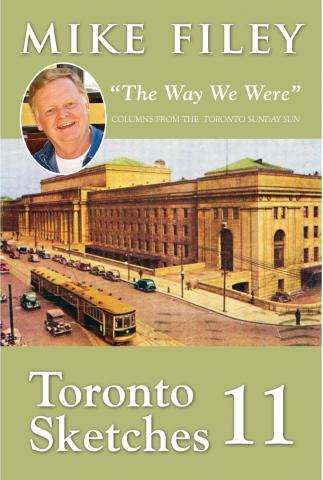
Mike Filey’s column “The Way We Were” first appeared in the Toronto Sunday Sun not long after the first edition of the paper hit the newsstands on September 16, 1973. Now, almost four decades later, Filey’s column has enjoyed an uninterrupted stretch as one of the newspaper’s most widely read features. In 1992 a number of his columns were reprinted in Toronto Sketches: “The Way We Were.” Since then another nine volumes have been published, each of which has attained great success.
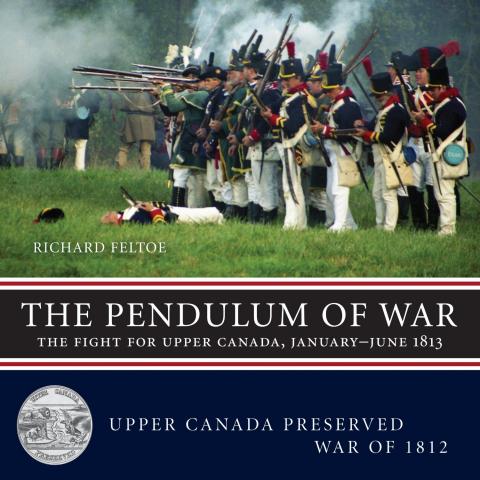
In his second of six books in the series Upper Canada Preserved — War of 1812, author Richard Feltoe continues a battlefield chronicle that combines the best of modern historical research with extensive quotes from original official documents and personal letters, bringing to life the crucial first six months of the 1813 American campaign to invade and conquer Upper Canada. The Pendulum of War documents the course of more than seven major battles and over a dozen minor engagements that were fought on the St.
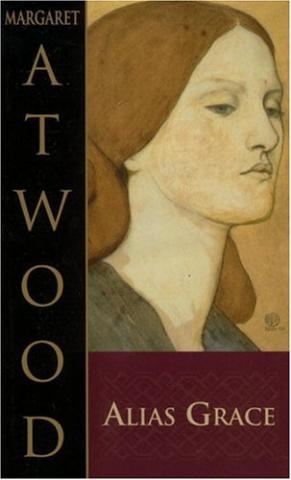
Alias Grace is based on the story of the notorious 1843 murders of Thomas Kinneat and his housekeeper Nancy Montgomery in Upper Canada. While the novel is based on true facts, the perspective is written through the eyes of a fictional doctor, Simon Jordan, who is researching the case. The story follows Jordan's researching of criminal behaviour, but is altered to the attempt to reconcile the truth about the case, and Grace Marks's involvement. Grace Marks and fellow servant of the house, James McDermott, were convicted of the crime.
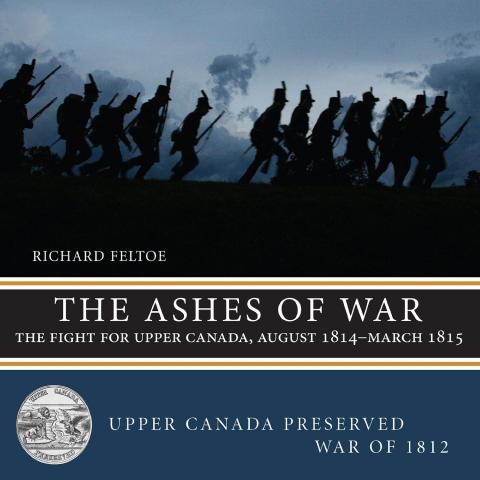
The sixth and final book of the Upper Canada Preserved — War of 1812 series, The Ashes of War examines in detail the closing stages of the war on the Northern Frontier, including the two-month siege of Fort Erie, the engagement at Cook’s Mills, the American attempt to recapture Michilimackinac (Mackinac), the tale of the Nancy, and the American raids into southwestern Upper Canada.
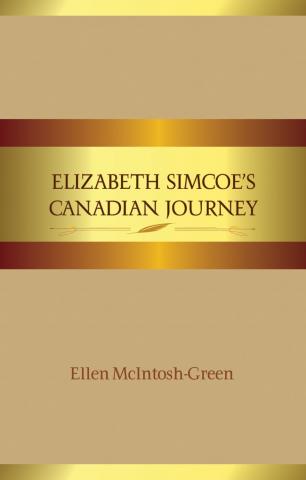
Elizabeth Simcoe was married to first Lt. Governor of Upper Canada John Graves Simcoe. She was a privileged, upper-class, English woman who refused to be left behind in England, therefore travelling with her husband and carving an English society out of what is now recognized as Ontario. Unparalleled by anyone in her time, Elizabeth forged through Lower and Upper Canada, creating one of the most inspiring and tragic stories of Canada.
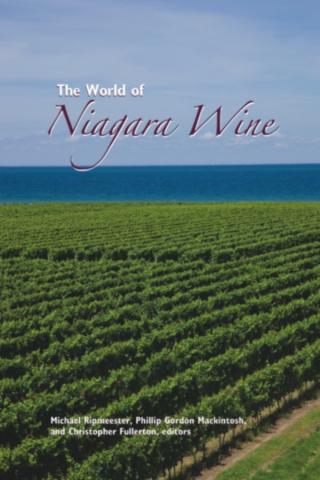
The World of Niagara Wine is a transdisciplinary exploration of the Niagara wine industry. In the first section, contributors explore the history and regulation of wine production as well as its contemporary economic significance. The second section focuses on the entrepreneurship behind and the promotion and marketing of Niagara wines.
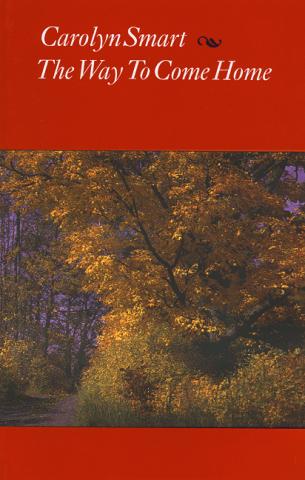
The Way to Come Home is Carolyn Smart’s fourth book of poems. It is a collection that ranges from celebrating the rural landscape north of Kingston, Ontario to re-creating the painful last phase of her friend Bronwen Wallace’s life in a moving sequence titled “The Sound of the Birds.” The volume’s opening sequence, “Cape of Storms,” views the hatred thriving amid the astonishing physical beauty of South Africa while “The woman is bathing” details a journey to Costa Rica that is a journey into the self.
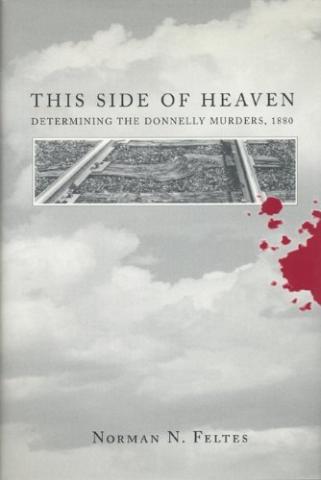
Using a rigorous marxist structuralist methodology, the book draws the reader into a compelling web of economic, social, and geographical structures, showing how human actions, sometimes murderous, arise from forces larger than the individual.
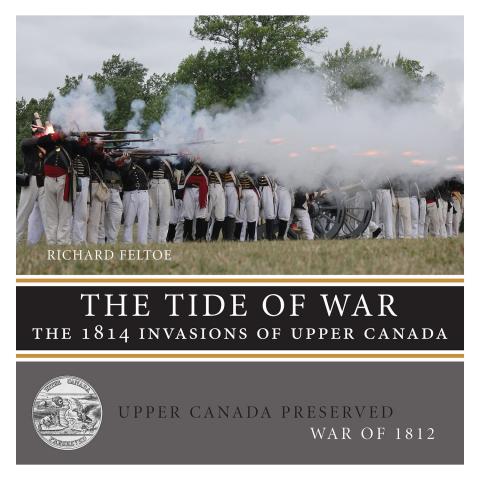
Throughout 1812 and 1813, Upper Canada had been the principle target for a succession of American invasions and attacks. Fortunately they all had been repulsed, but at a high cost in lives and the devastation of property on both sides of the border. By the beginning of 1814, both sides were determined to bring the war to an end with a decisive victory through an escalated commitment of men and military resources.
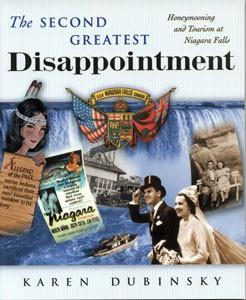
For two centuries, the natural spectacle of Niagara Falls has long been a destination for newlyweds and tourists from around the world. Why is that? In her book, The Second Greatest Disappointment: Honeymooning and Tourism at Niagara Falls, Karen Dubinsky poses a deceptively simple question: of all the ways to promote a waterfall as a tourist destination, why honeymoons?
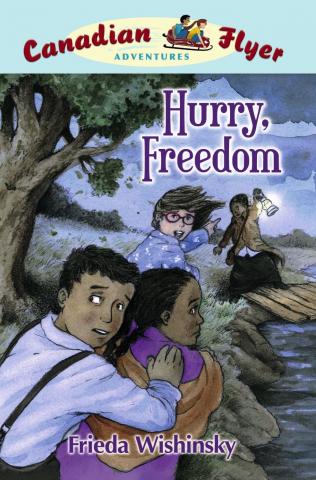
A part of the Canadian Flyer childrens chapter book series. In Hurry, Freedom Emily and Matt embark on their most important journey yet — to the Canada-U.S. border in 1858 to travel along the Underground Railroad. They befriend famous abolitionist Dr. Alexander Ross and a group of runaway slaves he’s helping escape to Canada. With slave catchers in close pursuit, will Emily and Matt be able to help their new friends cross the Niagara River to safety?
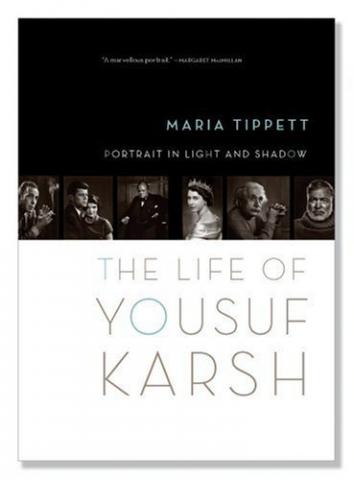
The Life of Yousuf Karsh: Portrait in Light and Shadow tells, for the first time ever, the full story of how a young Armenian immigrant living in Ottawa in the 1930s became the most prominent portrait photographer of the twentieth century. Acclaimed biographer Maria Tippett was granted unprecedented access to the private section of the extensive Karsh archives, and interviewed family members and former colleagues of Karsh (1908-2002).
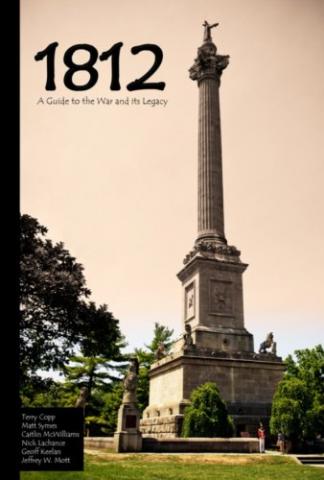
For Canadians, the War of 1812 has held various meanings at different times. In the immediate aftermath, alongside the “Loyalist” narrative of fleeing from the defeat of the British at the hands of American rebels, the war was regarded as redemptive for those still loyal to British North America. From the American perspective, it is merely one in a host of small-scale wars in North America, and the events of 1812–1815 are mostly forgotten in the collective memory of the United States.
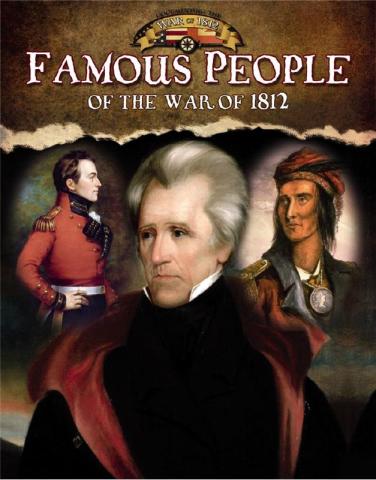
The War of 1812 resulted in a surging sense of nationalism for both the United States and Canada. This fascinating book looks at the achievements of the military leaders and other key figures involved in the conflict during this time of nation-building.

Bestselling, award-winning author James Laxer offers a fresh and compelling look at this important battle by bringing together two historic narratives: the Native peoples' "Endless War" to establish soveriengty on their traditional terrorities, and the American campaign to settle its grievances with Britain through the conquest of Canada.

Inside the Museums tells the stories of ten of Toronto's heritage properties, their history, and some of the secrets held within their historic walls. It is the perfect companion for any walk through Toronto's old world, providing wondrous context for a world often passed-by.
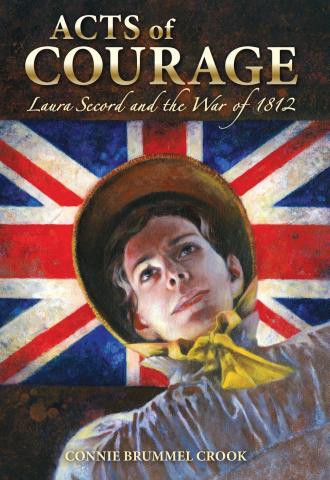
In Acts of Courage, Connie Brummel Crook dramatizes the life of one of Canada’s most enduring heroines, Laura Secord. from young Laura Ingersoll’s early days in Great Barrington, Massachusetts, amidst the turmoil that followed the American Revolutionary War, the story outlines her father’s difficult decision to move his family to Upper Canada.
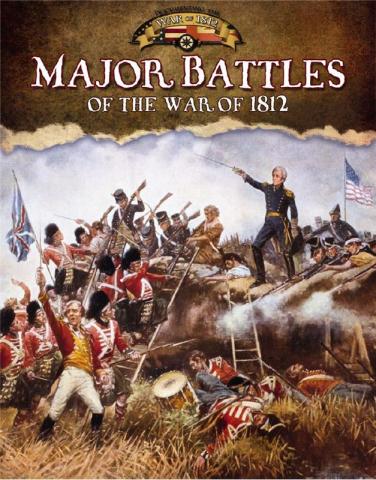
Pivotal battles waged before, during, and after the War of 1812 are detailed in this fascinating book. Battles between the United States and the British and Canadians saw gains and losses of territory for both sides, all of which proved to be only temporary. For the Native Indians who fought on each side, the result was the loss of their land and autonomy.
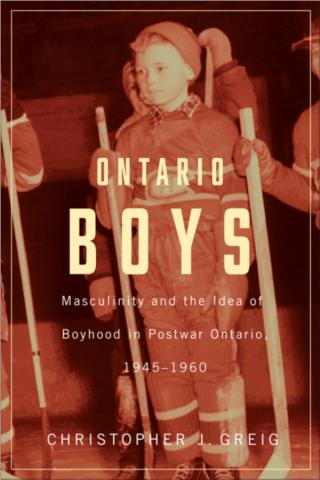
Ontario Boys explores the preoccupation with boyhood in Ontario during the immediate postwar period, 1945–1960. It argues that a traditional version of boyhood was being rejuvenated in response to a population fraught with uncertainty, and suffering from insecurity, instability, and gender anxiety brought on by depression-era and wartime disruptions in marital, familial, and labour relations, as well as mass migration, rapid postwar economic changes, the emergence of the Cold War, and the looming threat of atomic annihilation.
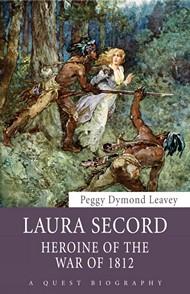
Peggy Dymond Leavey looks at the controversy surrounding Laura Secord's legacy even today. A story of true heroism, Laura Secord lived a long life never receiving full recognition for her famous journey in 1813.
After dragging her injured husband off the battlefield during the War of 1812, Laura Secord (1775-1868) was forced to house American soldiers for financial support while she nursed him back to health. It was during this time that she overheard the American plan to ambush British troops at Beaver Dams.
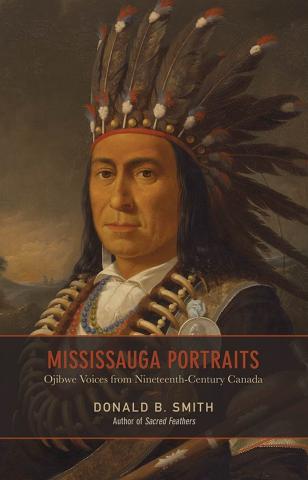
The word “Mississauga” is the name British Canadian settlers used for the Ojibwe on the north of Lake Ontario – now the most urbanized region in what is now Canada. The Ojibwe of this area in the early and mid-nineteenth century lived through a time of considerable threat to the survival of the First Nations, as they lost much of their autonomy, and almost all of their traditional territory.
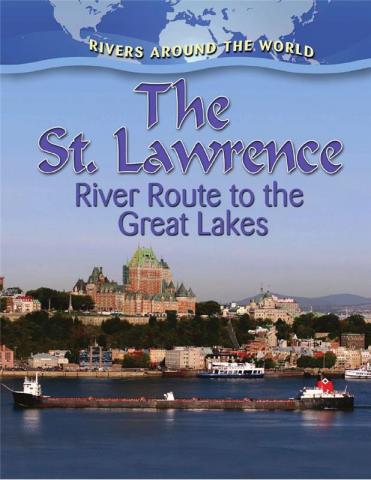
The St. Lawrence River forms part of the boundary between Canada and the United States and connects the Great Lakes with the Atlantic Ocean. This informative book follows this important commercial waterway across the provinces of Ontario and Quebec to where it reaches the Gulf of St. Lawrence.
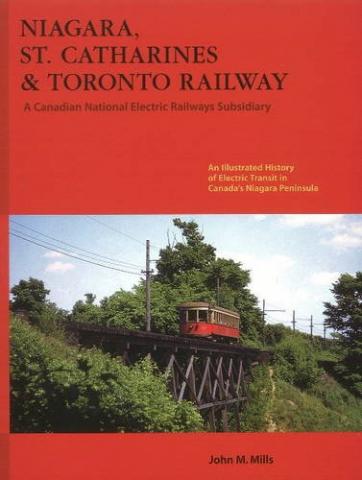
From its inception as a horsecar line in 1874, the Niagara, St. Catharines, & Toronto Railway is one of the foremost examples in Canada of an intensively developed and closely integrated transportation system. It operated local street railways, interurban lines, carload and less-than-carload freight, lake steamers, a large motor coach system, and even a circle trolley line around the Niagara Gorge.
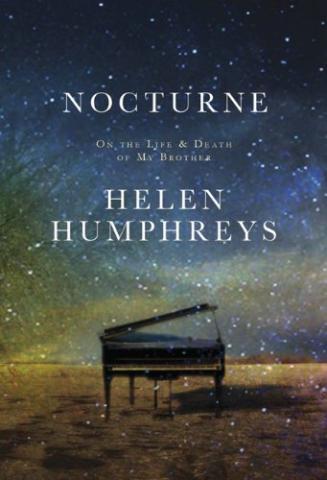
Helen Humphreys’ younger brother was gone before she could come to terms with the fact that he had terminal cancer. Diagnosed with stage 4B pancreatic cancer at the age of forty-five, he died four months later, leaving behind a grieving family. Martin was an extraordinary pianist who debuted at the Royal Festival Hall in London at the age of twenty, later becoming a piano teacher and senior examiner at the Royal Conservatory of Music. The two siblings, though often living far apart, were bonded on many levels.
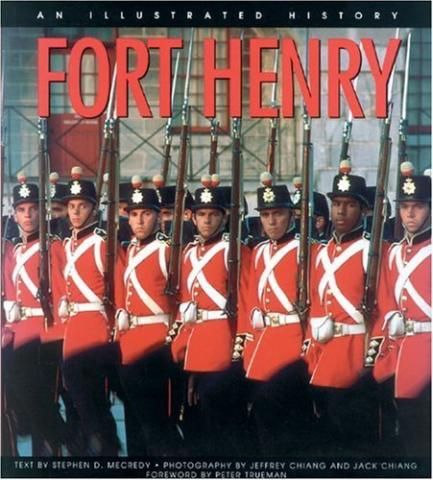
Stephen D. Mecredy tells the story of Fort Henry, the people and events--hangings, escapes, cholera outbreaks--involved in its colourful past.
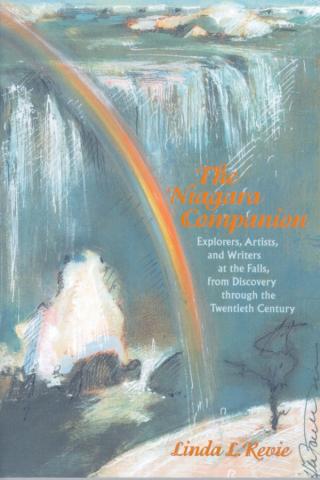
In The Niagara Companion, Linda L. Revie carefully unpacks centuries of artistic depictions of the awe-inspiring waterfall. Her careful considerations reveal how writers, artists, explorers, and scientists - all with their own specific commitments and conventions - have tried to encapture this singular natural wonder and wrestle with its immense force.
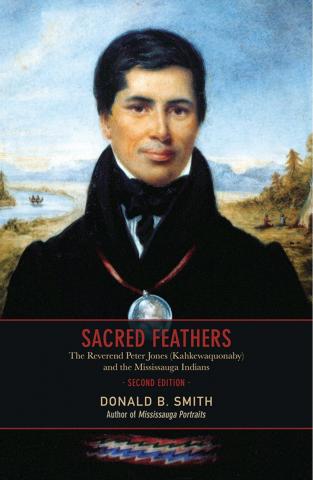
Much of the ground on which Canada’s largest metropolitan centre now stands was purchased by the British from the Mississauga Indians for a payment that in the end amounted to ten shillings. Sacred Feathers (1802–1856), or Peter Jones, as he became known in English, grew up hearing countless stories of the treachery in those negotiations, early lessons in the need for Indian vigilance in preserving their land and their rights. Donald B.
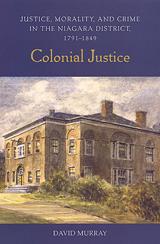
Murray explores how far local characteristics affected the operation of a criminal justice system transplanted from England; his analysis includes how legal processes affected Upper Canadian morality, the treatment of the insane, welfare cases, crimes committed in the district, and an examination of the roles of the Niagara magistrates, constables, and juries. Murray concludes by arguing that while the principles and culture of British justice were firmly implanted in the Niagara district, this did not prevent justice from being unequal, especially for women and visible minorities.

On December 22, 2022 as eastern Canadians were getting ready for the holidays, a bizarre weather system brought crippling freezing rain to central and eastern Ontario, Quebec and New Brunswick. Over 300,000 people lost power in Toronto alone and 70,000 were still without it on Christmas morning. Officials estimate that 40% of power lines in the GTA were affected and more than 20% of Toronto’s tree canopy was destroyed.
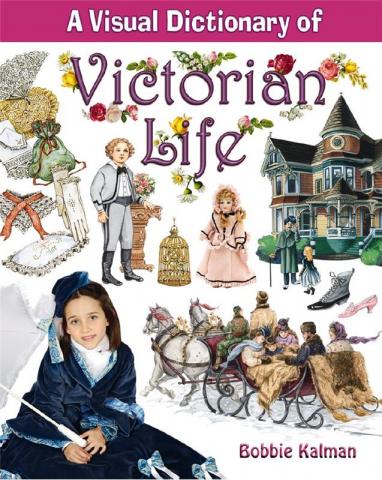
This illustrated dictionary introduces readers to life in North America during the Victorian era, between 1837 and 1901. Beautiful illustrations show how the way of life of the settlers in North America was influenced by the customs and traditions of Victorian England. Themes include the ornate Victorian home, the fancy fashion for men, women and children, the introduction of Christmas celebrations and the way of life in wealthy families.

In 1831, eighteen-year-old Oonagh Corcoran emigrates with her sister from southern Ireland to Upper Canada. In the deep folds of cool, green forest off the vast inland sea of Lake Ontario, she believes she has found paradise — only to discover that the New World harbours its own horrible injustices when she meets a fugitive slave from Virginia named Chauncey Taylor.
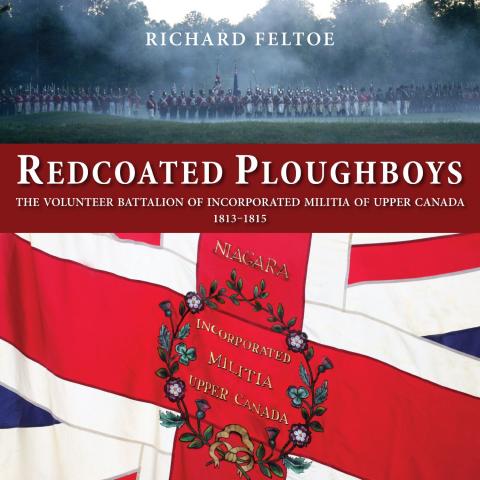
In 1812, the future of British North America hung in the balance as the United States declared war with the avowed goal of conquering the Canadas and removing British influence from the continent forever.

This illustrated dictionary introduces readers to early celebrations of Christmas in North America and around the world. Beautiful illustrations focus on Christmas customs and traditions in the Victorian era, especially those practiced by the early settlers in North America. Each spread features a particular Christmas theme and explains its origin.
The Call to Arms is the first of six books in the series Upper Canada Preserved — War of 1812. Each book in this battlefield-based chronicle combines the best of modern historical research with extensive quotations from original official documents and personal letters to bring to life this crucial period of Canada's early history. Numerous historical images of locations are counterpointed with comparable modern perspectives to give a true then-and-now effect.
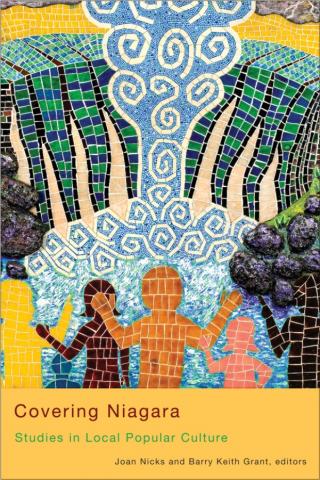
Covering Niagara: Studies in Local Popular Culture closely examines some of the myriad forms of popular culture in the Niagara region of Canada. Essays consider common assumptions and definitions of what popular culture is and seek to determine whether broad theories of popular culture can explain or make sense of localized instances of popular culture and the cultural experiences of people in their daily lives.
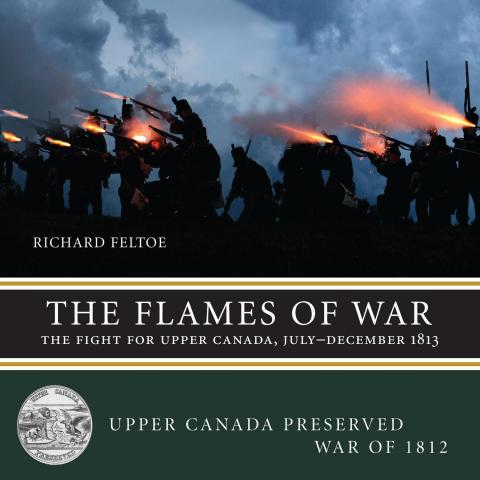
In April 1813 the Americans launched a new campaign to conquer Upper Canada, after their failure to do so in 1812. However, following initial victories, the U.S. assault stalled as a combined force of British regulars, Canadian militia, and Native allies counterattacked, throwing the Americans entirely onto the defensive by the end of June. During the next six months, this seesaw of military advantage was repeated again and again as each side escalated its commitment of men and resources and fought to gain the "final" victory.

Morning Star is the story of how the Underground Railroad linked two girls living more than a century apart:
Flower, her parents, and her baby brother have escaped from the plantation where they were kept as slaves and are making their way north to freedom via the Underground Railroad. Their journey is dangerous and often desperate, as they are helped and sheltered by some, and hunted by others. Flower’s courage helps her family through illness, re-capture, and to escape again to safety.

Ontario's rich geologic history is illustrated here by short descriptions of more than 200 field sites ranging from Timmins in the north to Windsor in the south. These include the Sleeping Giant near Thunder Bay; Agawa Canyon; the Sudbury meteorite crater; Niagara Escarpment; the Falls and Gorge; numerous caves, the mineral-rich Bancroft area; and the high lakeshore cliffs at Scarborough Bluffs. Some sites are sacred to First Nations and are associated with spectacular rock art.
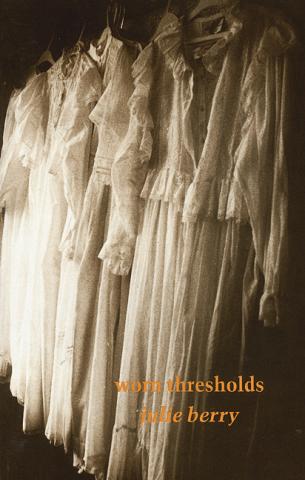
Reading Julie Berry’s poetry means entering a new poetic space, crossing thresholds of pain and delight at once raw and refined. “like marie d’oignies who buried bloody/ mouthfuls of herself/ in the garden/ i need my poems to be like this,” Berry writes in “Touching Ground.” “Like this” is finely-turned and constantly surprising, haunting as plainsong, throaty as the blues.